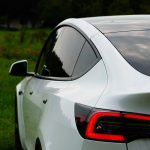Investor sentiment around Tesla has shifted, as Cantor Fitzgerald recently announced an increase in its price target for the electric vehicle maker’s shares from $355 to $510. This significant move reflects both the changing landscape of the auto and tech sectors and the growing attention from investors on Tesla’s broader ambitions. The financial firm’s updated outlook arrives at a moment when Tesla is working to expand its operations beyond traditional car manufacturing, with a diverse lineup of products and services drawing fresh market interest. While industry watchers have kept a close eye on Tesla’s high-profile initiatives, this revision underscores how anticipated new projects are influencing Wall Street expectations.
Earlier predictions regarding Tesla’s market performance often centered on fluctuations in vehicle delivery numbers or quarterly profits, with some skepticism about the timeline and feasibility of products like the Semi and the autonomous driving division. More recent news, however, shows an increasing alignment among analysts that Tesla’s growth potential lies in its upcoming AI-driven programs and expansion into energy and robotics. These developments mark a shift in narrative from focusing solely on car sales to recognizing Tesla’s ambitions to become a multipronged technology company. This latest price target boost is a notable departure from more conservative outlooks issued in previous years, reflecting a stronger belief in Tesla’s capacity to scale multiple lines of business concurrently.
What Are the Main Drivers Behind the Raised Tesla Price Target?
Cantor Fitzgerald’s revision of Tesla’s valuation is largely supported by anticipated milestones in production for several of its upcoming programs, including the Cybercab, Tesla Semi, and Optimus. The investment firm expects volume production for the Cybercab, Semi, and Megapack 3 to begin in 2026, with Optimus also scheduled to enter production lines by next year. Investments in these projects are expected to contribute substantially to Tesla’s long-term growth, supported by the company’s continued emphasis on AI-powered initiatives across mobility and energy storage. The company’s focus is described in its update:
“We continue to evolve and augment our product lineup with a focus on cost, scale and future monetization opportunities via services powered by our AI software. Cybercab, Tesla Semi and Megapack 3 are on schedule for volume production starting in 2026.”
How Does Tesla’s Capital Spending Factor into Future Growth?
According to Cantor Fitzgerald, Tesla’s capital expenditures are projected to reach around $9.2 billion in fiscal year 2025 and increase to $12 billion in 2026. These rising figures are closely linked to Tesla’s goal to scale operations further and to support new ventures, including robotics, autonomous driving, and energy storage infrastructure. By investing heavily in its capacity, Tesla aims to maintain a lead in innovation and product rollout in highly competitive industries. The firm’s analysis points to diversified investments as a means for Tesla to sustain its vertical integration and expand its operational footprint.
Does Cantor Fitzgerald See Value Beyond Tesla’s Vehicle Sales?
The revised price target is not solely based on projected increases in car sales but also considers the potential of Tesla’s Full Self-Driving (FSD) software, energy projects, and upcoming robotaxi services. Shares closed at $433.72, with the new target implying over 17% upside. These areas are seen as important contributors to Tesla’s long-term value:
“Overall, we remain bullish on TSLA over the medium to long term. We continue to see meaningful future upside from Energy Storage & Deployment, FSD, Robotaxis/Cybercab, Semis, and Optimus Bots.”
Analyst Andres Sheppard highlights that Tesla’s expanding platform sets it apart from more narrowly focused competitors, broadening its revenue opportunities.
Tesla’s current strategy demonstrates an ongoing shift from being viewed primarily as an automaker to a company positioned at the intersection of energy, technology, and artificial intelligence. For readers following investment opportunities, it is important to consider how Tesla’s heavy capital investment today could impact later profitability and competitive standing. The variety of projects—spanning autonomous vehicles, AI robots, and large-scale energy storage—suggest a company prepared to operate across multiple fast-growing sectors. However, as with all growth-oriented investments, there remains an element of execution risk tied to product launches and adoption rates. Monitoring production progress and operational updates will be essential for investors evaluating the credibility of Tesla’s expansion and Cantor Fitzgerald’s optimistic outlook.
- Tesla’s price target rises to $510 on growth in new technology programs.
- Analysts highlight initiatives like Cybercab, Semi, Optimus, and energy projects.
- Company expands capital spending to support scaled production and diversification.










